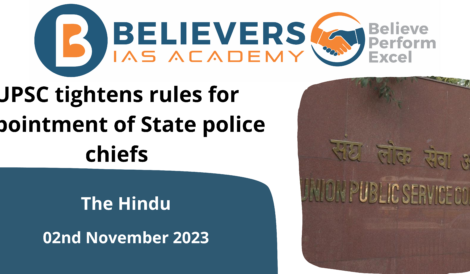Bill raising quota ceiling to 65% passed in Bihar
Context
On Thursday, the Bihar Assembly unanimously passed a Bill increasing reservation for Backward Classes, Extremely Backward Classes, Scheduled Castes, and Scheduled Tribes from 50% to 65%. Chief Minister Nitish Kumar told House members that the provisions of the Bill would be implemented as soon as practicable.
What were the findings of the caste-based survey in Bihar?
- On October 2, 2023, the Bihar government revealed the results of the 2023 caste-based survey. According to the results of the survey:
- Backward classes account for 63% of the state’s 13.07 crore population.
- Backward classes account for 27.13% of the population.
- Extremely backward classes: 36.01% of the population is classified as extremely backward.
- Other backward classes: OBCs and EBCs account for 63% of the population.
- Scheduled castes and tribes: Nearly 85% of the population is classified as backward or extremely backward, or as a member of a scheduled caste or tribe.
- Poverty affects 33.16% of the population, with lower poverty rates among the backward classes.
- Income: 9.4 million families earn less than $6,000 per month, with only 3.9% earning more than $50,000 per month.
- The survey started in January 2023 and concluded in April. The first phase involved counting households and the second phase collected information on all castes regions and economic backgrounds
What was the purpose of the Caste-Based survey?
- Formation of Socioeconomic Policy:
-
-
- The Bihar government launched the caste-based census to collect precise data on socioeconomic situations.
- Based on reliable and up-to-date statistics, the goal is to develop better policies and programs for disadvantaged groups.
-
- Incorporating Economic Status:
-
-
- The survey records economic status as well as caste information, offering a comprehensive picture of the socioeconomic landscape.
- The survey’s target population in Bihar’s 38 districts is 12.70 crore people.
-
- Previously Unresolved Data Issues:
-
- The Union government’s 2011 Socio-Economic and Caste Census (SECC) had statistical mistakes, and the raw data was never released.
What are the changes made according to the caste-based survey?
- Increase in Reservations:
-
-
- The Bihar Assembly has passed legislation to raise reservation quotas for certain groups.
- Backward Classes, Extremely Backward Classes, Scheduled Castes, and Scheduled Tribes would be included in the new reservation.
- The proposed increase increases the reservation from 50% to 65%.
-
- Total Reservation Capacity:
-
-
- With the addition of the existing 10% quota for Economically Weaker Sections (EWS), Bihar’s total reservation will reach 75%.
- This exceeds the Supreme Court’s 50% threshold.
-
- Specific Quota Modifications:
-
- The Bihar Reservation Amendment Bill specifies changes for each category:
- The quota for the Extremely Backward Class (EBC) rises from 18% to 25%.
- The quota for the Backward Class (BC) rises from 12% to 18%.
- The quota for Scheduled Castes (SC) rises from 16% to 20%.
- The quota for Scheduled Tribes (ST) is increasing from 1% to 2%.
- The existing 3% reservation for women from British Columbia has been erased.
What are the legal challenges faced in conducting caste-based surveys?
- Various Grounds for Disagreement: The survey was challenged in the Patna High Court on a variety of grounds, including alleged violations of the Constitution, invasions of privacy, a lack of state government competency, political objectives, and dependence on untrustworthy methodology.
- Concerns about the Constitution: Petitioners contend that giving a caste identity to all individuals, regardless of whether or not they intend to receive state benefits, breaches constitutional rights such as the right to identification, dignity, informational privacy, and the right of choice established by Article 21.
- Issues of Competence and Authority: Critics argue that the state government lacks the legal authority to select District Magistrates and local bodies for data collecting without a notification provided by the Central government under Section 3 of the Census Act, 1948.
- Intervention by the Court: Based on the legal arguments, the High Court first delayed the second part of the survey on May 4, 2023.
- Recent High Court Decision: The High Court dismissed all petitions opposing the survey, allowing the second phase to resume. The court explained its ruling by citing the Indra Sawhney Case, claiming that recognizing caste intends to rectify socio-economic backwardness, as envisaged by Article 16(4) of the Constitution.
- Petitions to the Supreme Court: Despite the High Court’s approval, multiple applications to the Supreme Court have been filed challenging the ruling and the current caste survey.
What are the positive and negative impacts of the caste-based survey?
- Beneficial features :
-
-
- Making Informed Policy Decisions: Accurate data can help guide policymaking, allowing for the development and execution of successful programs to elevate neglected populations and minimize socioeconomic inequities.
- Considering Intersectionality: Other characteristics, such as gender, religion, and geography, connect with caste. A survey can highlight these overlaps, resulting in more sophisticated policy approaches.
-
- Non-Beneficial features:
-
-
- Potential for Stigmatization: The disclosure of caste identities may result in stigma or discrimination, potentially discouraging honest responses and jeopardizing the survey’s accuracy.
- Manipulation of Politics: Politicians can use caste-based data for short-term gain, leading to identity-based vote bank politics and potentially diverting focus away from serious policy issues.
- Caste Identity Fluidity: Simplistic interpretations may ignore intra-caste differences and historical changes. Caste identities are dynamic, and a survey may struggle to capture them, resulting in misleading depictions of reality.
-
Conclusion
In conclusion, the Bihar government’s caste-based survey serves a dual goal of correcting socioeconomic inequities and informing policy decisions for underrepresented people. Despite legal hurdles and objections, the study intends to provide a thorough picture of how caste intersects with other characteristics.




